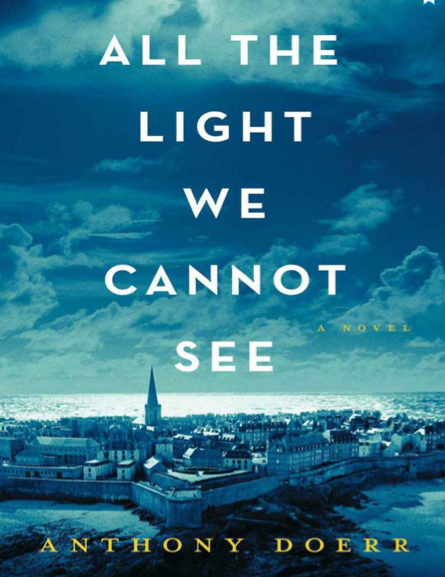“All the Light We Cannot See” by Anthony Doerr is a poignant and intricate novel set against the backdrop of World War II. The narrative intricately weaves together the lives of two young protagonists: Marie-Laure LeBlanc and Werner Pfennig, whose paths eventually converge in the war-torn city of Saint-Malo, France. and book cover is here.

Marie-Laure LeBlanc, a blind French girl, lives in Paris with her father, Daniel LeBlanc, a locksmith at the Museum of Natural History. Her father builds her a detailed miniature of their neighborhood, helping her navigate her world despite her blindness. When the Nazis occupy Paris, Marie-Laure and her father flee to the coastal town of Saint-Malo, seeking refuge with her reclusive great-uncle, Etienne. Unbeknownst to Marie-Laure, her father carries with him a priceless gem, the Sea of Flames, which the museum entrusted to him for safekeeping.
In Germany, Werner Pfennig, an orphan with a knack for repairing radios, is raised in a children’s home with his sister, Jutta. Werner’s talent with radios earns him a place at a brutal Nazi school, the National Political Institute of Education at Schulpforta. Here, he is trained in the ways of war and indoctrinated into Nazi ideology. His skills eventually lead him to a position in a special unit tasked with locating and destroying anti-German resistance.
As the war progresses, Werner’s unit is sent to Saint-Malo to trace the origins of French Resistance broadcasts. At the same time, Marie-Laure becomes more involved in the Resistance through her great-uncle Etienne, who uses his radio to transmit crucial information to the Allies. As Saint-Malo faces relentless bombing by Allied forces, both Marie-Laure and Werner’s lives are thrown into peril.
The novel’s climax occurs during the Allied bombardment of Saint-Malo in August 1944. Marie-Laure is trapped in her great-uncle’s house with limited supplies, while Werner is tasked with locating the source of the Resistance broadcasts. Through a twist of fate, Werner hears Marie-Laure’s transmissions and decides to find her, driven by a growing sense of morality and a desire to protect her.
When Werner finally reaches Marie-Laure, he saves her from an imminent threat, and the two form a brief, profound connection amidst the chaos of war. Werner’s actions reflect his internal conflict and ultimate rejection of Nazi ideology. Tragically, shortly after their encounter, Werner is captured by Allied forces and later dies in a POW camp due to illness and injury.
Marie-Laure survives the war and goes on to live a long life, becoming a respected scientist. The novel ends with her reflecting on her past, the people she lost, and the connections that shaped her journey. Werner’s sister, Jutta, also survives and eventually learns about her brother’s final days, finding some solace in knowing he tried to do good amidst the horrors of war.
“All the Light We Cannot See” is a beautifully crafted narrative that explores themes of resilience, the impact of war on the innocent, and the unseen connections between individuals. Doerr’s meticulous attention to detail and the intertwining lives of Marie-Laure and Werner highlight the enduring power of hope and humanity even in the darkest times. The novel is a testament to the light that can be found in even the most harrowing circumstances, illuminating the strength of the human spirit.